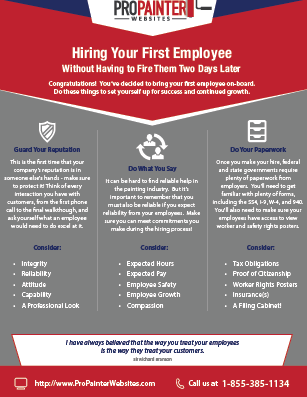Explore The Role Of Seasonal Factors In The Success Of Business Exterior Paint And Discover The Very Best Times To Secure Enduring Results For Your Task
Explore The Role Of Seasonal Factors In The Success Of Business Exterior Paint And Discover The Very Best Times To Secure Enduring Results For Your Task
Blog Article
Article Produced By-Doherty Skafte
When you're planning an industrial external paint job, seasonal factors can make or break your results. You'll want to consider exactly how temperature level and humidity effect paint application and drying times. Choosing the appropriate period can ensure your paint adheres effectively and lasts longer. However which seasons are truly the very best for this kind of work? Allow's explore the crucial elements that can influence your project's success.
The Effect of Temperature Level on Paint Application
When you're preparing a commercial outside paint task, the temperature level can substantially affect exactly how well the paint sticks and dries out.
Ideally, you want to paint when temperatures vary between 50 ° F and 85 ° F. If it's too chilly, the paint may not cure effectively, resulting in concerns like peeling or cracking.
On the other side, if it's as well hot, the paint can dry too rapidly, avoiding proper attachment and leading to an unequal finish.
You ought to also take into consideration the moment of day; early morning or late afternoon offers cooler temperature levels, which can be extra favorable.
Constantly examine the producer's referrals for the specific paint you're using, as they usually provide advice on the perfect temperature level variety for optimum results.
Humidity and Its Result on Drying Times
Temperature isn't the only environmental factor that influences your business outside painting job; humidity plays a considerable duty also. High humidity degrees can decrease drying out times dramatically, impacting the total top quality of your paint work.
When the air is saturated with wetness, the paint takes longer to treat, which can bring about problems like bad adhesion and a higher danger of mildew development. If you're repainting on a specifically moist day, be planned for prolonged delay times between layers.
It's vital to keep track of local climate condition and plan appropriately. Preferably, aim for moisture levels between 40% and 70% for optimal drying.
Keeping https://professionalpaintersnearm54208.blogsuperapp.com/35631883/the-comprehensive-handbook-for-collaborating-with-painting-service-providers in mind ensures your job remains on track and delivers a lasting surface.
Best Seasons for Commercial Outside Paint Projects
What's the best season for your business external painting projects?
Springtime and early fall are usually your best options. During these periods, temperature levels are light, and moisture levels are frequently reduced, developing optimal conditions for paint application and drying out.
https://www.countryliving.com/home-design/decorating-ideas/advice/g1704/kitchen-paint-color-ideas/ , which can cause paint to completely dry also promptly, resulting in bad adhesion and finish. Similarly, winter season's cool temperature levels can prevent correct drying out and curing, taking the chance of the long life of your paint task.
Go for days with temperature levels between 50 ° F and 85 ° F for optimum results. Remember to check the regional weather forecast for rainfall, as wet problems can ruin your job.
Preparation around these elements ensures your paint project runs smoothly and lasts longer.
Verdict
In conclusion, planning your commercial outside painting tasks around seasonal factors to consider can make a considerable difference in the result. By organizing job during the ideal temperatures and humidity degrees, you'll guarantee far better adhesion and drying times. Keep in mind to keep an eye on local weather report and choose the correct time of year-- spring and very early autumn are your best options. Taking these steps will aid you achieve a durable and professional coating that lasts.
